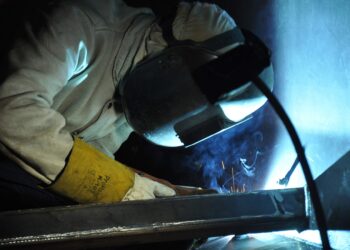Archaeologists in Croatia have completed the excavation of an exceptionally well-preserved Roman shipwreck that has lain undisturbed on the seabed of Barbir Bay, near Sukošan, for nearly two millennia.
The wooden vessel, measuring approximately 12.5 meters in length, dates back to the 1st–2nd century AD. Remarkably, the ship has survived in such good condition that even parts of its upper structure — rarely found in ancient wrecks — remain intact. Experts believe this offers a unique window into the shipbuilding techniques and maritime life of the Roman era.
Discovery and Excavation
The wreck was first identified four years ago during research into the ancient Roman harbour at Barbir. “We came across a piece of timber with an iron nail, which suggested there might be something more significant nearby. The following year we expanded the search area and realised it was a Roman shipwreck. After four and a half years of research, this final season has allowed us to uncover the entire ship,” explained Mladen Pešić, director of the International Centre for Underwater Archaeology in Zadar, in comments to Croatian public broadcaster HRT.
Excavations revealed that the vessel was constructed with remarkable precision and stability, designed to carry heavy loads over medium and long distances. According to Anton Divić, owner of Croatian underwater archaeology firm NavArchos, such ships were vital for sustaining coastal and island communities in antiquity.
Cargo and Daily Life at Sea
Finds from the site suggest that the ship once transported agricultural goods. Hundreds of olive pits were found aboard the wreck, while additional remains of grapes, peaches, and walnut shells were discovered in the surrounding harbour area. These discoveries provide evidence of trade in fresh produce, most likely from nearby Roman estates.
Conservation and Digital Documentation
Due to the high costs and risks of removing the wreck from the seabed, archaeologists have chosen to preserve it in situ. Once documentation is complete, the ship will be carefully reburied with sand and covered with protective geotextile — the same natural shield that preserved it for nearly 2,000 years.
Meanwhile, the excavation team has created detailed photogrammetric models using hundreds of overlapping photographs, ensuring that the ship is digitally documented in high precision. A 1:10 scale model of the vessel is also being planned for public exhibition at the Zadar Centre for Underwater Archaeology.
International Recognition
The project has already drawn worldwide attention. In 2024, the Sukošan wreck was featured in National Geographic’s Lost Treasures of Rome and PBS’s Changing Seas, showcasing Croatia’s underwater heritage to international audiences.
This year’s excavation brought together a multinational team, including experts from Croatia, Poland’s Nicolaus Copernicus University in Toruń, Germany’s Max Planck Institute, France’s Aix-Marseille University, the French archaeology company Ipso Facto, and Croatian firm NavArchos.
A Glimpse into the Past
For Croatia, the find represents one of the most extraordinary underwater discoveries of recent decades. Beyond its scientific value, the wreck highlights the importance of the Adriatic as a hub of trade and cultural exchange in the Roman world. “Such vessels were essential for life along our coast and islands two thousand years ago,” Divić noted.
By combining meticulous excavation with advanced digital techniques, archaeologists have ensured that this unique piece of Mediterranean history will remain preserved — both under the sea and in the historical record — for generations to come.






